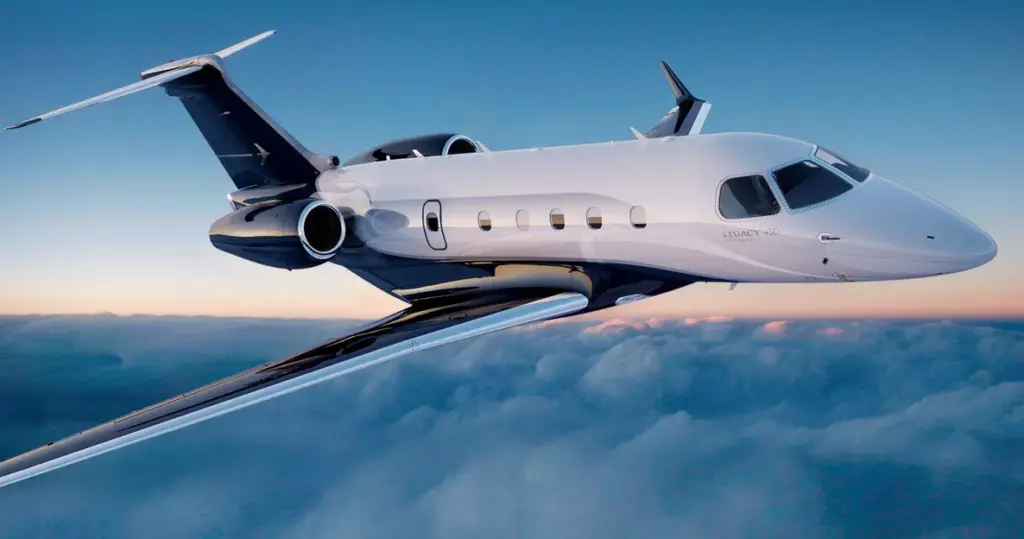
Chief Information Officers are grappling with the decision of whether to reinvent or renovate legacy IT systems, while also exploring the potential of modern architectures and adopting a product mindset approach. (Photo: Embraer/TTTech)
In an era of digital transformation, the aviation industry is faced with the pressing need to modernize its legacy IT systems. Chief Information Officers (CIOs) are grappling with the decision of whether to reinvent or renovate these systems, while also exploring the potential of modern architectures and adopting a product mindset approach. In an interview with Avionics, Mark Canada, a partner at Dialexa, an IBM Company, shed light on the challenges and opportunities associated with this transformation. With extensive experience in technology consulting, particularly for airlines, travel, and transportation, Mark provides valuable insights into navigating the complexities of legacy system modernization.
Airlines are large organizations with a diverse portfolio of applications. Portfolio modernization is a perpetual focus for these companies, but it often faces challenges due to competing priorities. Despite the inherent difficulties, Mark Canada emphasized the importance of treating modernization as a continuous stream. While external factors may disrupt funding in the short term, the goal should be to align resources and prioritize modernization efforts to ensure long-term success.
“As you go through a modernization effort, look at the ability to take advantage of the new technology capabilities that are at play to rethink customer experience—don’t just do some version of a ‘lift and shift,’” Canada said.
He encourages organizations to leverage the capabilities of new technologies to reimagine the customer journey. While operational stability and cost efficiency are valid considerations, it is equally vital to adopt a business-led mindset that places the customer at the forefront. By aligning modernization with customer needs, airlines can differentiate themselves in the market and create meaningful experiences for their passengers.
The aviation industry often faces the challenge of dealing with large-scale, monolithic solutions that hinder agility and innovation. Canada acknowledged this issue and recommended decomposing these complex systems into smaller, more manageable products. This approach involves transforming the monolithic solution into a portfolio of products, each with its own roadmap. While these products must work together cohesively, breaking them down enables individual components to be developed and improved upon independently, fostering a more dynamic and adaptable IT ecosystem.
“Think about how you begin to turn that monolithic solution into a portfolio of products that have their own organization, drive, and vision behind them,” he added.
To successfully modernize legacy systems, organizations must adopt a product mindset. Canada suggested that this shift in thinking allows companies to unlock new opportunities and stay ahead in a rapidly evolving industry. By treating each component of the IT system as a product, businesses can explore innovative ways to differentiate themselves and bring new capabilities to market. This product-centric approach aligns with a customer-first mentality, enabling airlines to create experiences that resonate with their passengers.
Looking ahead to the next three to five years, Canada envisions a landscape where airlines strive for a baseline level of operational stability. The focus will shift towards differentiation and creating unique customer experiences. Airlines will seek to reimagine the entire journey, from a passenger’s personal world to the day of travel, rather than just providing in-flight services. This broader perspective aims to enhance customer satisfaction throughout the entire travel experience.
The industry is moving away from solely focusing on operational efficiency and is increasingly prioritizing customer-centric improvements. Investments will be directed towards optimizing operations, achieving scalability, and addressing issues such as delays and outages. However, the true differentiation will come from fostering connected thinking and enabling seamless customer experiences. By leveraging technology and innovative strategies, airlines aim to stand out in a competitive market by delivering personalized and integrated journeys for their passengers.
To navigate the challenges of the aviation industry, Canada emphasizes the need for organizations to adopt a more product-centric approach. However, he acknowledges that implementing this shift in large, complex organizations such as airlines comes with its own set of challenges. Interdependencies within the portfolio and the intricacies of the industry require careful consideration of organizational structure, processes, and culture.
To successfully transform into a more product-centric organization, it is essential to align business and technology functions and adopt a joint approach to market. These organizational, process, and cultural dynamics must be at the forefront of decision-making. By investing time and energy in addressing these aspects, airlines can drive the desired outcomes and effectively differentiate themselves in the market. Canada highlighted that focusing on these foundational elements will enable organizations to successfully embrace a product-centric mindset and deliver enhanced customer experiences.